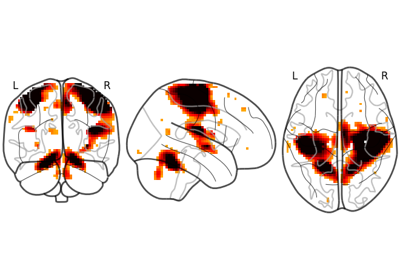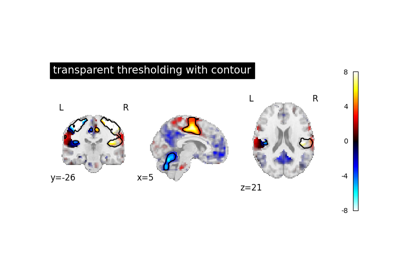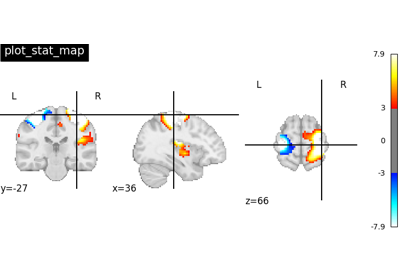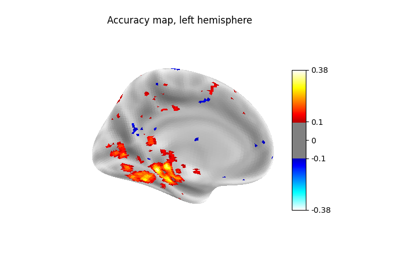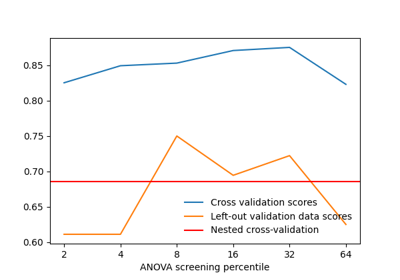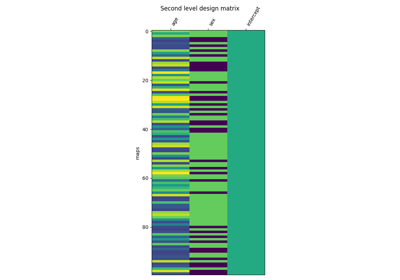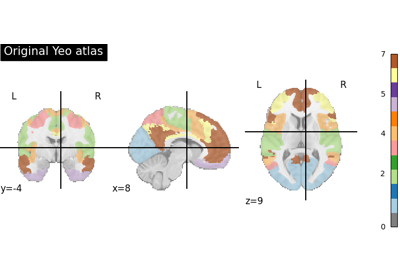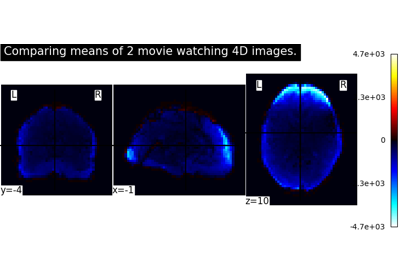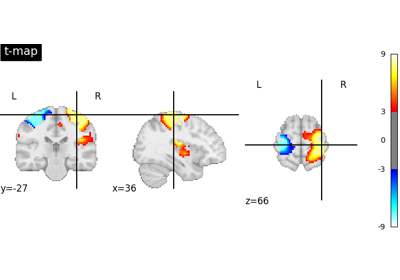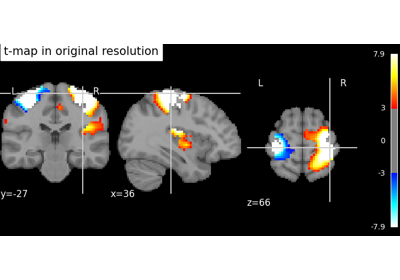Note
This page is a reference documentation. It only explains the function signature, and not how to use it. Please refer to the user guide for the big picture.
nilearn.plotting.show¶
- nilearn.plotting.show()[source]¶
Show all the figures generated by nilearn and/or matplotlib.
This function is equivalent to
matplotlib.pyplot.show, but is skipped on the ‘Agg’ backend where it has no effect other than to emit a warning.
Examples using nilearn.plotting.show¶

Basic nilearn example: manipulating and looking at data

Intro to GLM Analysis: a single-run, single-subject fMRI dataset

Controlling the contrast of the background when plotting

Visualizing Megatrawls Network Matrices from Human Connectome Project

Visualizing a probabilistic atlas: the default mode in the MSDL atlas

Visualizing multiscale functional brain parcellations
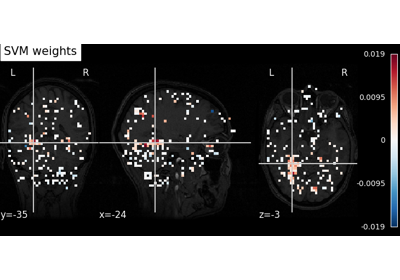
Decoding with ANOVA + SVM: face vs house in the Haxby dataset

Decoding with FREM: face vs house vs chair object recognition

Different classifiers in decoding the Haxby dataset

Encoding models for visual stimuli from Miyawaki et al. 2008

ROI-based decoding analysis in Haxby et al. dataset

Reconstruction of visual stimuli from Miyawaki et al. 2008

The haxby dataset: different multi-class strategies

Voxel-Based Morphometry on Oasis dataset with Space-Net prior

Classification of age groups using functional connectivity

Clustering methods to learn a brain parcellation from fMRI

Comparing connectomes on different reference atlases

Computing a connectome with sparse inverse covariance

Connectivity structure estimation on simulated data

Deriving spatial maps from group fMRI data using ICA and Dictionary Learning
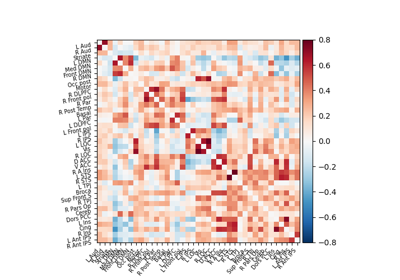
Extracting signals of a probabilistic atlas of functional regions

Group Sparse inverse covariance for multi-subject connectome

Regions extraction using dictionary learning and functional connectomes

First level analysis of a complete BIDS dataset from openneuro

Generate an events.tsv file for the NeuroSpin localizer task

Second-level fMRI model: true positive proportion in clusters

Second-level fMRI model: two-sample test, unpaired and paired

Computing a Region of Interest (ROI) mask manually

Regions Extraction of Default Mode Networks using Smith Atlas

Beta-Series Modeling for Task-Based Functional Connectivity and Decoding

Massively univariate analysis of a calculation task from the Localizer dataset

Massively univariate analysis of a motor task from the Localizer dataset

Massively univariate analysis of face vs house recognition

Multivariate decompositions: Independent component analysis of fMRI

NeuroVault meta-analysis of stop-go paradigm studies




